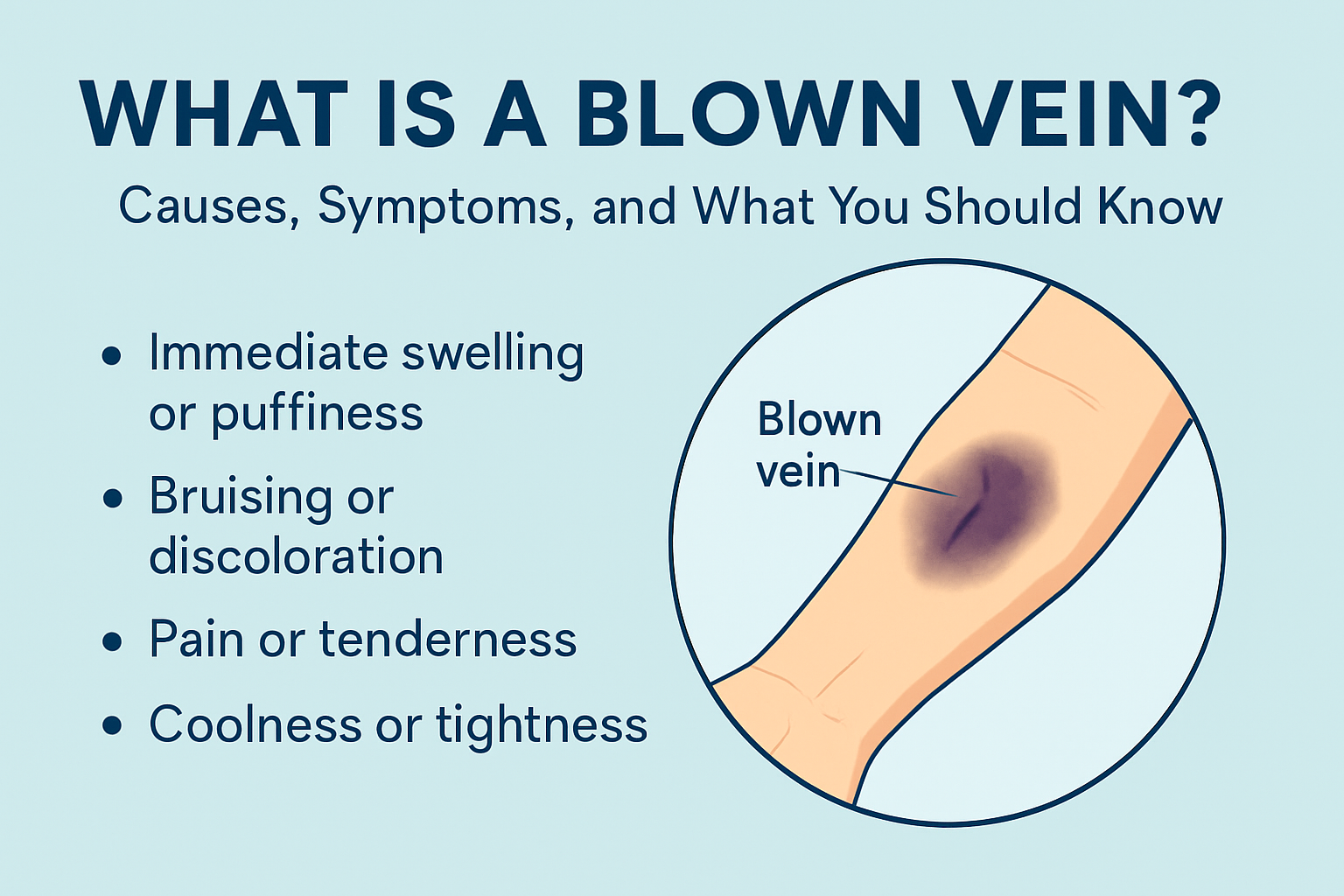What Is a Blown Vein? Causes, Symptoms, and What You Should Know

What Is a Blown Vein?
A blown vein occurs when a vein is damaged, often during an intravenous (IV) insertion or blood draw. It typically happens when the needle punctures through the vein or causes trauma to the vessel wall, leading to leakage of blood into the surrounding tissue. While it can look alarming, a blown vein is usually not dangerous and heals on its own with proper care.
Common Causes of a Blown Vein
There are several reasons why a blown vein might occur:
-
Poor vein visibility or accessibility: Veins that are small, deep, or mobile can be harder to access.
-
Multiple puncture attempts: Repeated tries increase the chance of puncturing through the vein wall.
-
Fragile or elderly veins: Some patients naturally have weaker veins more prone to blowing.
-
Incorrect angle or technique: Even experienced healthcare workers can sometimes miss the vein, especially under pressure.
Using a high-quality vein finder can help minimize the risk of a blown vein, especially in patients with difficult veins. One popular option is the Illumivein vein finder light, which uses LED transillumination to help clearly visualize veins and improve first-stick success.
Signs and Symptoms of a Blown Vein
If you or a patient experiences a blown vein, you may notice:
-
Immediate swelling or puffiness at the insertion site
-
Bruising or discoloration around the area
-
Pain or tenderness when touched
-
Coolness or tightness in the affected limb
In most cases, these symptoms resolve over time without complications. However, if there's excessive swelling, numbness, or signs of infection, seek medical attention.
How to Treat a Blown Vein
Treating a blown vein involves simple first-aid measures:
-
Stop the IV or blood draw immediately.
-
Apply gentle pressure to stop bleeding.
-
Elevate the limb to reduce swelling.
-
Apply a cold compress for the first 24–48 hours to ease bruising.
-
Switch sites for any further venipuncture attempts.
Recovery from a blown vein typically takes a few days to a week. The bruising may linger but gradually fades.
Can a Blown Vein Be Prevented?
While not always preventable, here are ways to reduce the risk of a blown vein:
-
Hydrate before blood draws to plump up your veins.
-
Use a vein visualization tool, especially for hard-to-stick patients.
-
Choose the right needle size and angle for each situation.
-
Communicate vein history to providers if you've had issues in the past.
For nurses and phlebotomists, tools like the Illumivein vein finder can be a game-changer. It’s a compact, affordable device that helps locate veins more easily, reducing the risk of a blown vein and improving the patient experience.
Final Thoughts
A blown vein can be painful and frustrating, but it's usually not serious. Understanding why it happens, how to treat it, and how to prevent it in the future can make a big difference for both patients and providers. Whether you’re a healthcare professional or just someone who wants to be better informed, being aware of how to handle a blown vein is a valuable piece of knowledge—and having the right tools on hand, like the Illumivein vein finder light, can make all the difference.

